Much like the film vs. digital debate of yore, the question of mirrorless vs. DSLR is a topic that proliferates the web, from lengthy forum discussions to articles about the so-called “switch” from one system to another.
However, the truth is that, as much as we seem to want it to exist, there actually is no debate, at least for 90% of the most popular photography genres. We are no longer dealing with an abyssal difference in image quality. There is no longer a chasmic gap in speed and performance.
For most applications, the playing field is now level. It has become less a question of concrete advantages and disadvantages, and more a question of personal preference and style.
Take street photography for instance. What characteristics might a street photographer desire from his camera? A single body with a fixed lens or small prime, portability, discreetness, manual dials, image quality that is sufficient for large prints, to name a few. To this end, a small DSLR with a compact prime would be just as effective as, say, an Olympus OM-D, Fujifilm X100T or Ricoh GR, at least from a purely technical standpoint. But whether the street photographer feels more comfortable with one or the other has more to do with personal preference than anything else, though modern mirrorless features such as a tilting screen, wireless capabilities, a smaller body and a quieter shutter may contribute to his decision. Heck, he could even use a smartphone, and indeed many do.
And what about a genre that requires a wide range of fast lenses and a high resolution, such as portraiture or landscape? You probably wouldn’t bring a smartphone to a job like this, but both DSLRs and the latest mirrorless cameras certainly tick all the right boxes. No one’s work better exemplifies this than that of talented portrait photographer, Damien Lovegrove, whose work with Fujifilm X series cameras has garnered him respect and admiration across the photographic community.
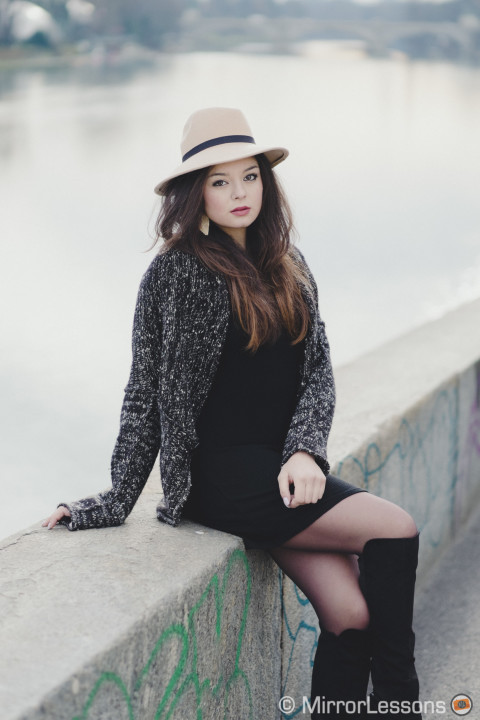
The X-T1 and 56mm has become our favourite combo for portraiture.
Then there is the topic of autofocus, which is also the most controversial. Mathieu recently had an interesting conversation about this topic in the latest State of Mirrorless episode we recorded with host Ugo Cei and professional photographer Andrew S. Gibson (the episode will be online soon). Andrew switched from a Canon 5D mark II to the Fujifilm X-T1 and one of the reasons he did this has to do with autofocus (read his post here). This brought to light an interesting debate and one truth: that autofocus is no longer an issue for the majority of people. Any of the latest Panasonic cameras, for example, have an AF system that won’t let you down – and we are talking about an AF system with only contrast detection. The same conclusion can be applied to Olympus cameras and many others. In short, mirrorless cameras have almost completely closed the gap for day-to-day use.
Street, portraiture, weddings, events, photojournalism, adventure, concert, astro, documentary, long exposure, travel, time-lapse, food, fashion, macro, underwater: these are all genres of photography that you can do with either a DSLR or mirrorless camera without really having to consider the question of “which one is better.”
Which leaves us with the remaining 10%. For which genres can we clearly say that DSLRs have leg up over mirrorless cameras in 2015? Though they are dwindling year by year, there are still four fields of photography where having a DSLR on hand could prove beneficial. Let’s have a look at them now:
Sports
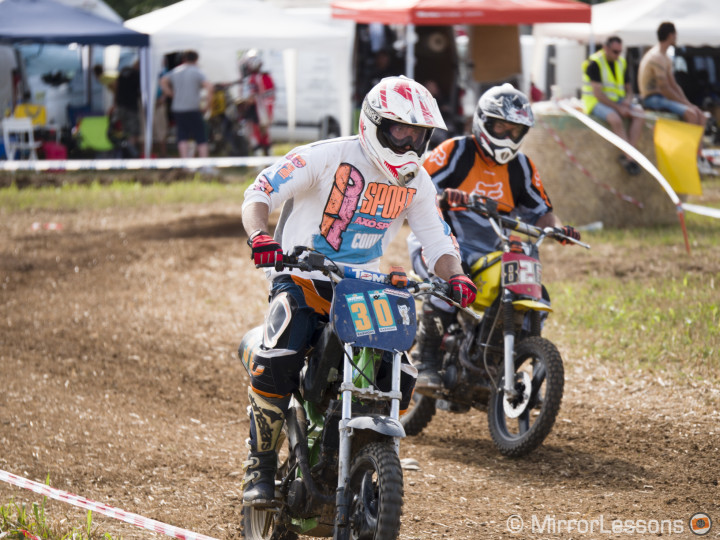
Before digital cameras ever broke onto the scene, there were film cameras. And film cameras, as with any other photography genre, were also used for sports. In fact, if you browse this list of the most iconic sports photographs of all time, you can’t help but notice a dearth of digital images.
I guess the point I’m trying to make here is that great sports images can be taken without state-of-the-art autofocus systems, as any seasoned sports photographer knows. Talent, timing and a little bit of luck go a long way in making a great image – a high-performing camera is simply the proverbial cherry on top.
However, with the progression of technology, it is natural to expect more from modern cameras, and the advent of digital has also seen a rise in expectations from publications. Since there is now the possibility to capture multiple frames in a row, the pressure to capture the perfect pose and expression has raised. This is exactly what Rick Maiman explained in our 10 sports photographers who use mirrorless cameras for work article:
As has been uttered, muttered, and triumphed so often in photography, it’s the decisive moment that has become the raison d’être as well as the bane of the pursuit of perfection.
To meet these high expectations, sports photographers need an accurate and fast autofocus system, large buffer, high burst rates, a bright and fast viewfinder, dual memory card slots and high-performing memory cards. Immediacy is also paramount, now that the wireless transfer of images has become the growing method of getting important shots back to the press as soon as possible.
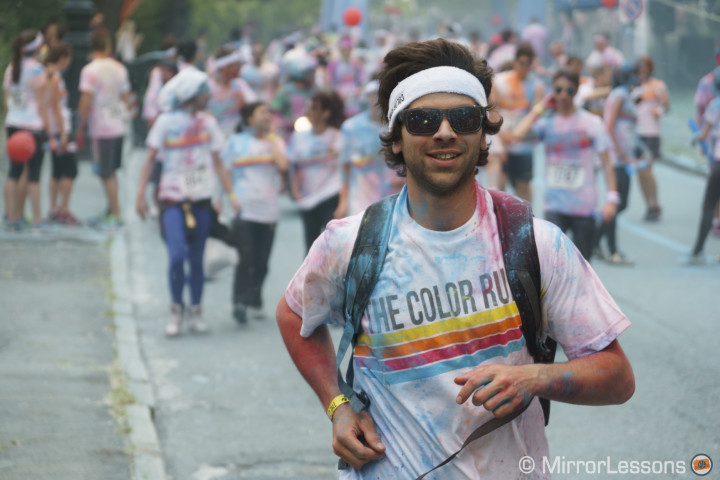
Mirrorless cameras are ahead of DSLRs in terms of wireless capabilities and some of them even perform better in terms of continuous shooting speed. (Think about the Samsung NX1.) However, there is still a gap in autofocus and buffer performance between a camera like the high-end Nikon D4s or Canon EOS 1Dx and any of the professional mirrorless models. The 1Dx for example can maintain 12fps for an average of 180 full sized JPGs. Most mirrorless models don’t accept the fastest memory cards either and currently none have a dual SD card slot, which is something that many photographers lament. As for the autofocus, it is improving with every new model, as we’ve demonstrated on this website multiple times with cameras as varied as the GX7, X-T1, a6000 and E-M1.
Then there is the time lag of electronic viewfinders (EVFs). While most photographers are in agreement that EVFs have greatly improved over the last couple of years, they remain divided as to whether the refresh rate is sufficient for fast action. Hugh Hastings explained this very well in our sports photographer article:
When shooting with a DSLR you have no issues at all with seeing, all the time, what is happening in front of you, but EVF delays and blips still occur with current mirrorless cameras. I am sure this is is only a matter of time and it will be sorted. Then many sports photographers can look to forward to carrying, on my working out, about a third of the weight of equipment that is currently used.
On the other hand, more optimistic photographers like Thom Hogan feel that, “EVF/shutter combinations on mirrorless cameras … are near equal in total lag to the mirror/shutter combinations in DSLRs.” What is certain is that EVF technology has improved greatly in the last year and a half. The X-T1’s EVF, for instance, is currently one of the best on the market with a time lag of a mere 0.005 seconds. And I am sure it will be reduced even further in the following years.
A final issue is the lack of extreme telephoto lenses for shooting far-off action. Sure, you can always adapt third-party DSLR lenses to your mirrorless camera, but the AF performance will decrease drastically, if not be lost completely*. The recent A7r mark II that was announced a few weeks ago could be an important step forward if the autofocus works as well as shown in the earliest hands-on videos, but I also can’t help but wonder: why would you want to adapt a DSLR lens to a mirrorless camera if there is no tangible difference in the weight of your kit?
And it isn’t just a question of extreme telephoto lenses but also of fast apertures. The upcoming M.Zuiko 300mm is an f/4 lens and the Fujinon 100-400mm will probably have a non-constant aperture. These two lenses will be competing with DSLR lenses that offer an f/2.8 aperture on 400mm and 500mm focal lengths. Considering their full frame sensor and high ISO capabilities, DSLRs will certainly remain the most logical choice for the majority of professional sports shooters. (And we mustn’t forget about the professional support program that Canon and Nikon have in place either.)
My prediction is that DSLRs will gradually become more specific to sports photography at the very high-end level like the Champions League soccer final, for example. For many other sports that don’t require extremely long telephoto lenses, mirrorless cameras will become more popular. In fact, some of them, like the a6000 or the E-M1, already are.
*One exception is the Olympus OM-D E-M1, whose autofocus system functions with Olympus SLR Zuiko lenses, albeit more slowly than with its native M.Zuiko lens selection.
Wildlife

So similar are the hurdles of wildlife and sports photographers that they could almost be grouped into one category. Along with a good viewfinder, autofocus system and buffer, they also require weather-sealed bodies since wildlife photography mostly takes place outdoors, sometimes in very inclement conditions. Two years ago, this would have been more of an issue, as most mirrorless cameras and their lenses weren’t weather sealed. Today, there is a wide array of high-end mirrorless bodies and professional lenses, complete with freeze, splash and dust-proof bodies.
Of course, extra long telephoto lenses are also of the essence, as they allow you to capture the natural behaviours of the wildlife you are observing. Many mirrorless systems include decent telephoto lenses that will satisfy enthusiast users who cannot afford more expensive lenses or have more of a passion for documenting wildlife than for the pure photographic process itself. However, there will always be more demanding enthusiasts and professionals who desire something with more quality and faster apertures.
A viable alternative to extreme telephoto lenses that can be used on both DSLRs and mirrorless cameras is the spotting scope, a kind of optical telescope frequently used by birders to observe and photograph nature at an extreme distance. You can check out our recent interview with Tara Tanaka to see a perfect example of what you can achieve with this solution. But since they aren’t used by everyone, professional telephoto lenses remain a crucial addition to any wildlife photographer’s kit.
My prediction is that mirrorless cameras will permeate the wildlife niche before the sports niche for a number of reasons. First, we know that a number of telephoto lenses are on the way from all the mirrorless brands. Second, the size/weight factor is more relevant for wildlife photographers than for sports photographers, as the former is constantly on the move, and sometimes on difficult and treacherous terrain. The best example of a system that embraces compactness is the Nikon 1 V3 with the CX 70-300mm (210-900mm equivalent), and you can see some impressive examples of wildlife photography on Thomas Stirr’s website taken with this combination. Finally, we have the growing capabilities of video and hybrid photography. In the interview mentioned above, Tara explains how she uses the 4K Photo feature of the GH4. With the increase in video resolution in the future and companies like Panasonic already working on 8K, I can see this becoming a very appealing option for wildlife photographers. It can take weeks and sometimes months to freeze the perfect moment when it comes to wildlife, and it is not just a question of the camera’s performance but also the patience and dedication of the photographer. The ability to shoot 4K bursts at 30fps will make moments like these less stressful and critical.
Architecture and Interiors
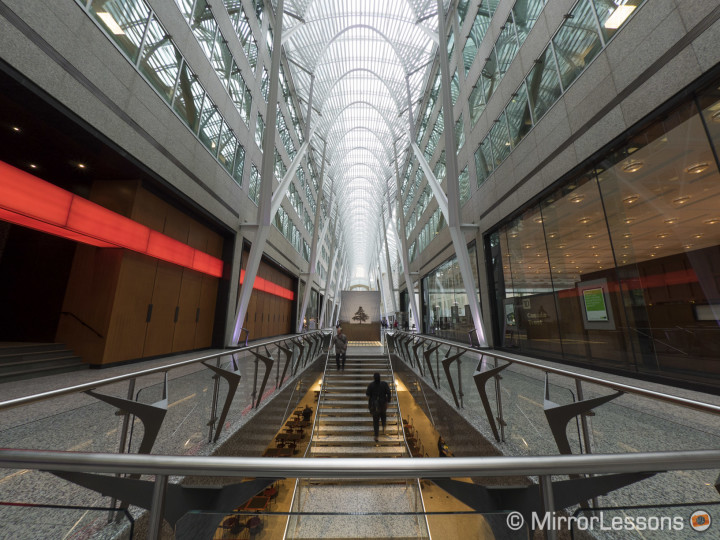
Architectural photographers tend to fall into two categories – those who swear by tilt-shift lenses and those who get along just fine with extreme wide angles and Photoshop. The truth is that there is no right way to approach architectural photography, so long as you choose the best light and angle for the room, and are able to correct converging vertical lines, be it in-camera or using a lens correction tool in post-production.
For the former group, mirrorless systems aren’t yet an option, as there aren’t any tilt-shift lenses available as of 2015, and it doesn’t seem that any are in the works.* That said, there is nothing stopping the likes of Olympus and Panasonic, whose Micro Four Thirds lens line-up is almost complete, from adding a tilt-shift lens to their respective roadmaps. In this case, it is simply a question of time, rather than quality or performance.
*Note that on Sony full frame cameras such as the A7, you can use an adapter and work with some of the Canon or Nikon tilt-shift lenses.
High-End Commercial / Still Life
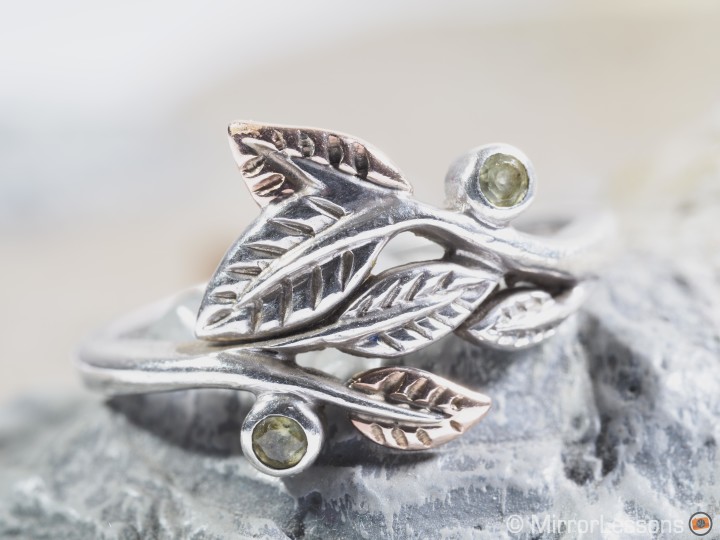
This final genre actually provokes less of a mirrorless vs. DSLR discussion and more of a medium format vs. everything else debate. High-end commercial photography and still life are all about producing results that can be used in publications as small as magazines and billboards as large as the ones you see in Times Square.
And it isn’t just a question of resolution. The truth is that some mirrorless cameras and DSLRs already house a sensor with the appropriate number of megapixels. Think about the A7r or the unreleased A7r II with its 42MP full-frame sensor. Other cameras incorporate an alternative solution such as the High Res Shot mode on the Olympus OM-D E-M5 II that combines eight separate shots into one 40MP file (usable only with static objects). And let’s not forget about the Foveon technology of the Sigma DP series, whose sharpness, resolution and colour accuracy is exceptional.
However, medium format is a combination of resolution, dynamic range, colour fidelity and unsurpassed image quality that many high-end photographers simply aren’t ready to give up. What’s more, their work often requires a great deal of laborious post-production and the need for uncompressed 14 or 16 bit Raw files, something mirrorless cameras don’t yet provide. More than any other, this is a genre where quality cannot be compromised.
I do believe that medium format will remain the standard for this highest level of photography, at least for the foreseeable future. Still, the increase in resolution and the constant improvements in image quality will certainly attract more professional users to smaller system as well. The 42.4MP of the A7r mark II is more than enough for high-end usage, especially since not everyone requires the highest megapixel count and the largest sensor. For example, photographer Peter Belanger takes still life shots of Apple products with a Canon 5D mark III and Nathan Wright uses an A7r for his still life images of audio products. Its WiFi connectivity also allows him to work faster when adjusting the lighting set-up.
What about the future?
Mirrorless cameras have come a long way in a relatively short period of time, breaking free of the the “substitute point-and-shoot” label to take their place beside DSLRs as a viable alternative for many genres of photography. Though there are still a few genres for which professionals might be reluctant to consider a mirrorless camera, the gap is slowly closing, not least owing to the implementation of certain technologies lacking on DSLRs such as the above-mentioned 4K Photo mode from Panasonic and Olympus’ High Res mode, to name a couple.
Now, you may think that I’m intimating that mirrorless cameras will render DSLRs obsolete someday, but this is far from the truth. As I stated at the beginning, these two branches of digital camera are now so close in terms of performance that the question “which is better” is no longer really relevant, and as such, there is no reason both cannot continue to coexist.
There is only one area where DSLRs continue to have a distinct advantage, and that is the vast lens range available not only from the principle manufacturers (Canon and Nikon) but also third parties like Tamron and Sigma. The latter has gained a lot of respect over the last few years thanks to its Art series. It rivals if not surpasses Nikon/Canon quality while remaining less expensive. Both brands also offers a very wide variety of lenses, including extreme telephoto lenses that are less expensive and therefore more suitable for amateurs and enthusiasts.
When Sigma and Tamron seriously enter the mirrorless game, it will be a sign that mirrorless cameras are taking over.
The lens topic is also the main reason the new Sony A7r mark II could be a game changer. It is too soon to draw any conclusions but if the camera can retain a high AF performance with good DSLR lenses, it might prompt more people to switch. Why? Because they won’t have to renounce their collection of DSLR lenses, at least at the beginning. Not only, but the lens choice becomes even bigger for new users who doesn’t yet own any lenses.
All that said, there is one question that I keep asking myself: will Nikon and Canon decide to enter the mirrorless market more seriously and aggressively, and if so, when?
Because if they do, we could certainly see another leap forward in technology, which can only be a good thing for users like you and me.
What are your thoughts about the mirrorless vs. DSLR debate? Do you think it is still relevant in 2015? Share your thoughts below!

